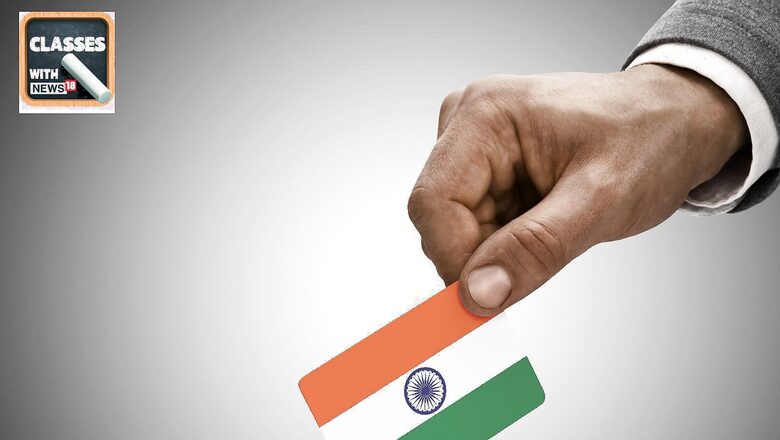
views
Droupadi Murmu has been elected as the 15th President of India. As India creates history by swearing in its first-ever tribal president today, July 24, let?s learn about the roles and responsibilities of a president. How is a president elected and who can one be in the run for a presidential election?
Who is the President of India?
A President is the formal head of the country. The Constitution of India vests the executive power of the Union formally in the President. In reality, the President exercises these powers through the Council of Ministers headed by the Prime Minister.
According to Article 74 (1) of the constitution, ?There shall be a Council of
Ministers with the Prime Minister at the head to aid and advise the President who shall in the exercise of his functions, act in accordance with such advice.
Provided that the President may require the Council of Ministers to reconsider such advice….., and the President shall act in accordance with the advice tendered after such reconsideration.?
Who Can be President of India?
To become a present, one should be an Indian citizen, above the age of 35 years, qualified to become a member of Lok Sabha, and should not hold any office of profit. The person should also be elected for five terms and can be removed through a motion of impeachment only.
Here is the list of people who have held the office of President of India ?
Rajendra Prasad, the inaugural President, is the only one so far to be re-elected to the position. Two Presidents, Zakir Husain and Fakhruddin Ali Ahmed have died in office. After the death of Zakir Husain, VV Giri took interim charge from May 1969 to July 1969, and Mohammad Hidaatullah from July 20 to August 1969. VV Giri was elected as president in August 1969. After the demise of Fakhruddin Ali Ahmed, BD Jatti took interim charge from February 1977 to July 25.
How is a President elected?
The President is elected for a period of five years. But there is no direct election by the people for the office of President. The President is elected indirectly. This means that the president is elected not by the citizens but by the elected MLAs and MPs. This election takes place in accordance with the principle of proportional representation with the single transferable vote.
The voting for the presidential elections takes place in the Parliament and all state legislative assembly secretariats. Unlike general elections where every vote has the same value, the votes cast by MLAs and MPs differ based on the population of the state they are representing.
Value of vote MLA is calculated by ?
Total population of the state divided by the number of elected members X 100
The value of MP is calculated by the sum of the vote value of elected members of all legislative assemblies divided by the sum of elected members of both the Houses of Parliament
The winning candidates securing the required quota of votes can be declared elected. To calculate quota,
The total number of valid votes cast is divided by the total number of seats to be filled plus 1
What Are Powers of the President? PM or Prez ? Who is More Powerful?
The President is the first citizen of India. She summons the sessions of Parliament and addresses the first session. President represents the Nation but does not rule it.
The bills passed in the Parliament need consent from President to become law. President also has veto power by which she can withhold or refuse to give assent to Bills (other than Money Bill) passed by the Parliament. The President can send the bill back to the Parliament asking it to reconsider it.
In case of a disagreement, President also holds a ‘veto’ power. This, however, has its limitations. For instance, after the President sends the bill back to Parliament, and the Parliament passes the same bill again and sends it back to the President, then, has to give assent to that bill. However, there is no mention in the Constitution about the time limit within which the President must send the bill back for reconsideration. This means that the President can just keep the bill pending with him without any time limit. This gives the President an informal power to use the veto in a very effective manner. This is sometimes referred to as ‘pocket veto’
President can send back the advice given by the Council of Ministers and ask the Council to reconsider the decision. In doing this, the President acts on his (or her) own discretion. When the President thinks that the advice has certain flaws or legal lacunae, or that it is not in the best interests of the country, the President can ask the Council to reconsider the decision. Although, the Council can still send back the same advice and the President would then be bound by that advice, such a request by the President to reconsider the decision, would naturally carry a lot of weight.
When no party has a clear majority, the President has the additional responsibility of making a choice and appointing the Prime Minister to run the
government of the country.
Let?s Test What We learned so far
To learn about other topics taught in school, explained by News18, here is a list of other Classes With News18: Queries Related to Chapters on Elections | Sex Versus Gender | Cryptocurrencies | Economy & Banks |
Read all the Latest News and Breaking News here




















Comments
0 comment